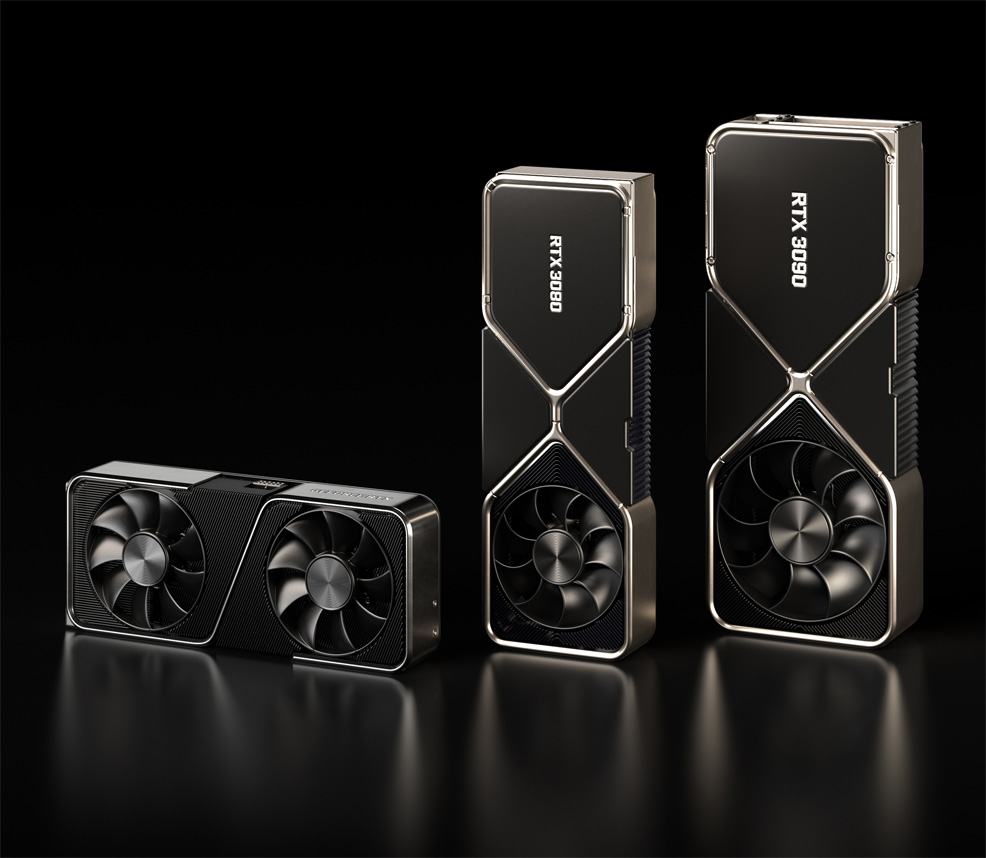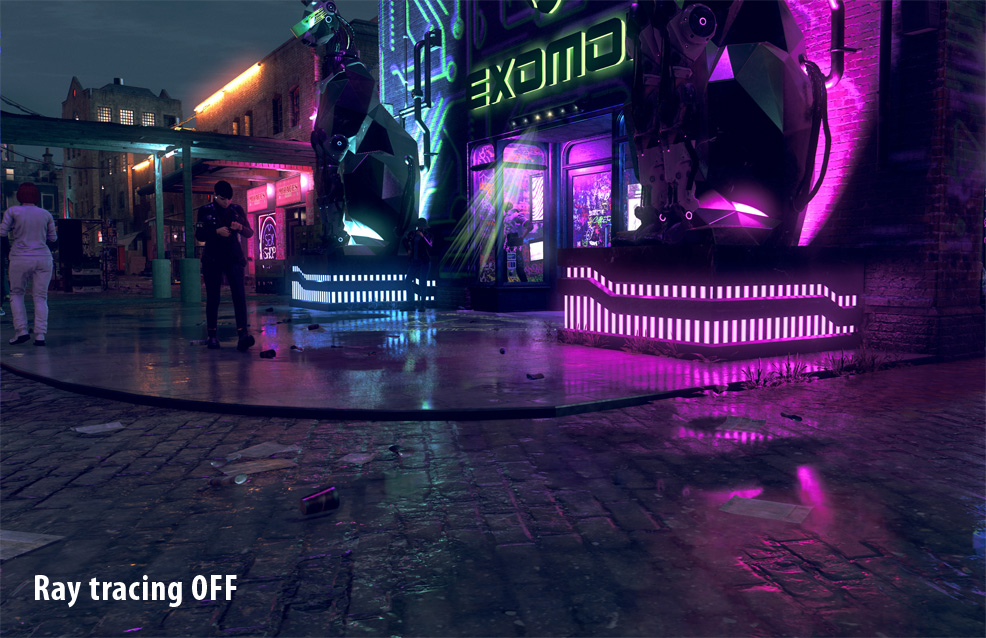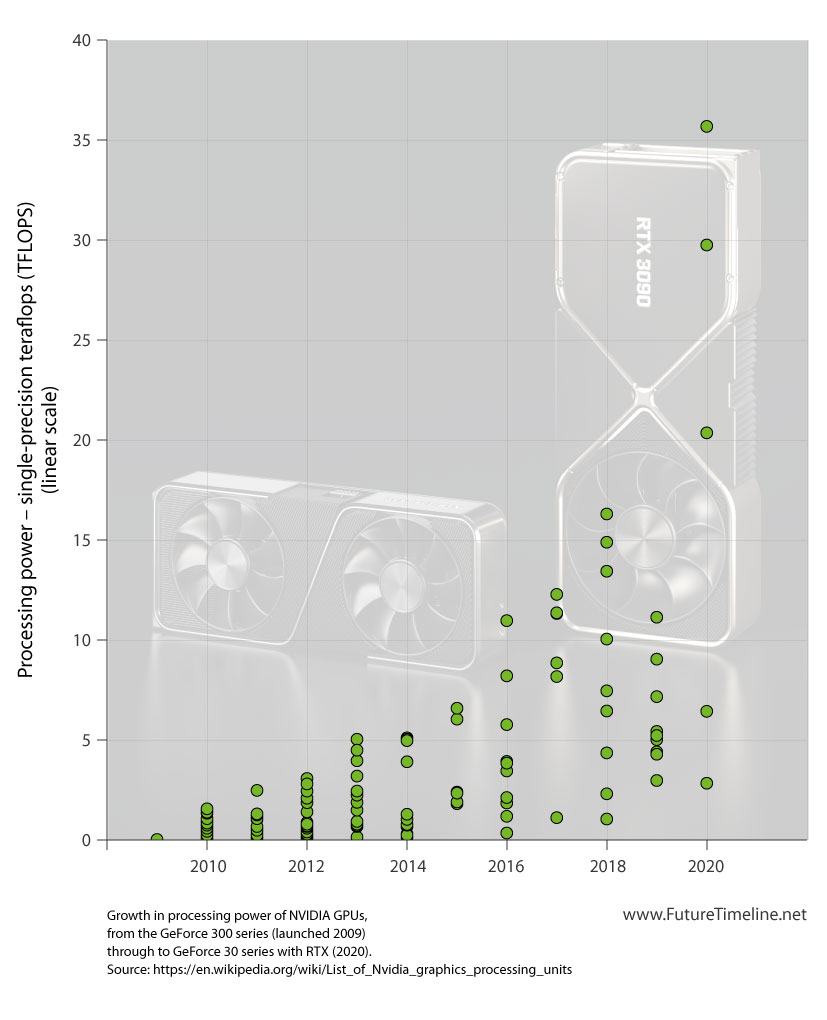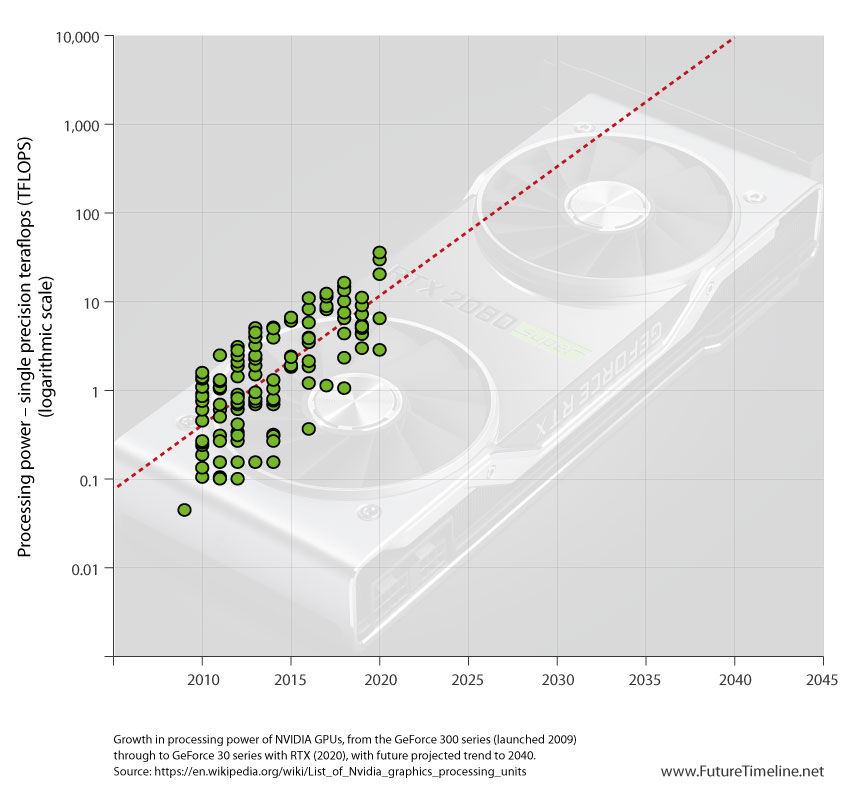
6th October 2020 NVIDIA's GeForce 30 series – a major leap in graphical processing power Chipmaker NVIDIA recently launched a new family of graphics processing units (GPUs) – the GeForce RTX 30 Series – which the company claims is the "greatest-ever generational leap" in graphics processing technology.
The GeForce 30 series, pictured above, is the successor to 2018's GeForce 20 series. NVIDIA began shipping the high-end RTX 3080 model first, followed by the even more powerful RTX 3090 at the end of last month. On 2nd October, the company announced that it would delay the launch of its mid-range RTX 3070 cards by two weeks (until 29th October) to guarantee availability. The entry-level and lower-mid-range RTX 3050 and RTX 3060 are expected to follow soon after. In recent years, the video game industry has taken advantage of a rendering technique known as ray tracing. Previously restricted to the realm of Hollywood special effects studios, the falling costs and rapid improvements of computer chips have made it accessible to consumers. Basic ray tracing with low ray counts became available on the older GeForce 10 series, via a driver update. However, NVIDIA first introduced real-time ray tracing with multiple, complex effects and high ray counts on its RTX 2080 card, part of the GeForce 20 series. Unlike that generation, the new GeForce 30 series will include entry-level cards – all of them with ray tracing support – making this revolutionary technique affordable even to budget gamers. Real-time ray tracing has been described by NVIDIA as "the biggest leap in computer graphics in years, bringing realistic lighting, shadows and effects to games, enhancing image quality, gameplay and immersion." Essentially, it models the behaviour of light in real time as it intersects objects in a scene. In other words, it can provide more realistic illumination by "tracing" a line from the viewer's eyes, through a pixel grid (forming an image of the scene), to an object behind each pixel and then accounting for the angle of light source(s) hitting that object. This is far more accurate than a mere approximation based on polygons. The effect is clearly seen in the comparison below, which alternates between ray tracing and standard graphics (click on the image to switch between views).
The GeForce 30 series is based on the new "Ampere" architecture, successor to "Turing" used in the GeForce 20 series. All three of the newly released cards (3070, 3080 and 3090) feature 28 billion transistors and a shrinkage in process size from 12 nanometres (nm) in the prior generation, to 8 nm now. The 3070 comes with 8.2GB of GDDR6 memory, while the 3080 and 3090 boast 10.2 and 24.6GB of GDDR6X memory, respectively. The flagship 3090 card has a memory bandwidth of 935.8 GB/s, which is nearly a terabyte per second, and more than double that of the previous generation's RTX 2080. While various factors can affect a game's frame rate and visual output, the improvement of these new GPUs is plain to see from the graph below. In terms of its raw processing power, the GeForce 30 family provides a doubling in performance compared to the GeForce 20 and is approaching the 40 teraflops that some believe is needed for photo-realistic dynamic environments. In a 2016 interview with GameSpot, Tim Sweeney, founder and CEO of Epic Games and creator of the Unreal Engine graphics platform, said this:
Meanwhile, third-generation tensor cores provide a boost to AI-based technologies, such as Deep Learning Super Sampling (DLSS). This technique uses AI for upscaling lower-resolution images to a higher-resolution for display on higher-resolution computer monitors (such as 8K). Once again, the GeForce 30 series makes it faster and more efficient to run such processes, with double the throughput of the previous generation. Yet another feature is the NVIDIA RTX IO – for rapid, GPU-based loading and game asset decompression, accelerating input/output performance by up to 100x compared with hard drives and traditional storage APIs. This offloads dozens of CPU cores' worth of work to the RTX GPU, improving frame rates and enabling near-instantaneous game loading. NVIDIA founder and CEO, Jensen Huang, commented at a recent launch event: "NVIDIA Ampere GPUs are a giant step into the future. The work of thousands of engineering years, the GeForce RTX 30 series delivers our greatest generational leap ever. NVIDIA RTX fuses programmable shading, ray tracing and AI for developers to create entirely new worlds. Twenty years from now, we'll look back and realise that the future of gaming started here." The last decade saw exponential progress in GPU performance. Looking at the projected future trend (below), these advances will continue to produce ever-more stunning visuals with orders-of-magnitude improvements over the next two decades. Imagine what a game of 2040 might look like, with up to 1,000 times the processing power available. Grand Theft Auto-style environments could be fully explorable, with an entire city full of shops, bars and other interior venues for a player to enter and interact with, as opposed to just a select few. A whole crowd of NPCs with human-like AI and natural language dialogue might confront you and respond in nuanced ways, instead of pre-made responses to your multiple-choice answers. Building destructions and other physics could be so detailed that tiny particles could be separated from larger blocks and remain persistent in your surroundings. A rainforest might be indistinguishable from the real thing, especially when combined with more immersive forms of virtual reality than are currently possible. These future games will owe their graphical performance to advances such as ray tracing, and doubtless other new techniques we have yet to see developed.
Ray tracing in video games is certainly a milestone for the industry, with some of the recent blockbuster titles now capable of breathtaking visual quality. However, while dynamic environments and textures are nearing perfection, achieving the same feat in character models will be vastly more challenging and is likely a long way off. As a result, there may be a strange period of uncanny valley, with in-game characters having an extremely detailed yet not-quite-convincing feel to them, as programmers work to iron out the various kinks. Photo-realism of faces and skin cannot be solved by raw computing power alone – but requires a much deeper understanding of humans, as explained by Sweeney in his 2016 interview:
In the meantime, gaming enthusiasts can enjoy the latest generation of NVIDIA graphics cards. The RTX 3070, 3080, and 3090 are retailing at $499, $699, and $1,499 respectively. For more information, see nvidia.com.
Comments »
If you enjoyed this article, please consider sharing it:
|










